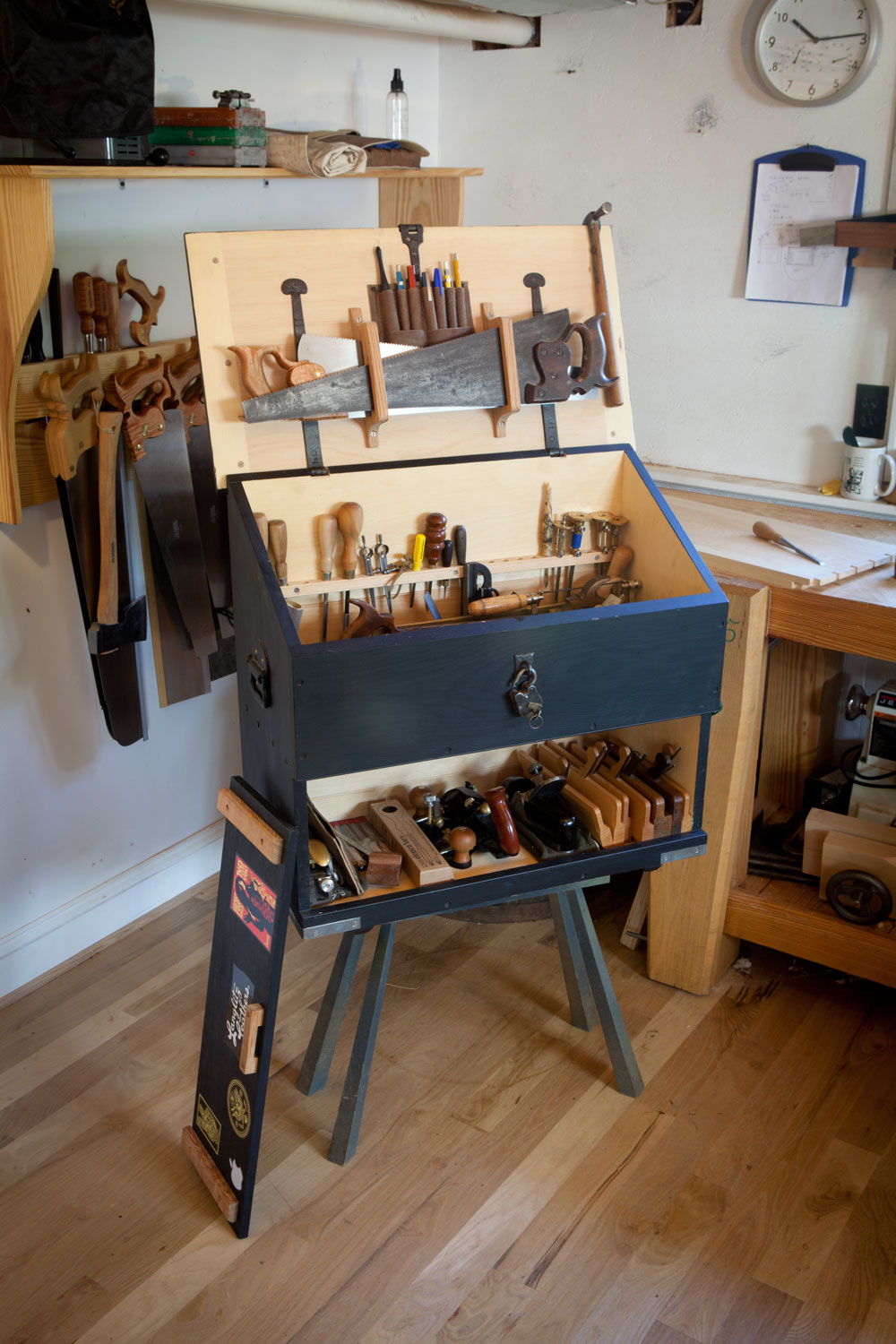
“Loren” (no last name given) of Canada designed and built his own electric lift standing desk, with integrated computer. I do like this. He’s mostly managed to create a desk that I like, while at the same time doing some tricks that I normally think are cringeworthy.
It’s a corner desk, which I don’t tend to like because of they’re inflexible layout, but I do appreciate how they maximize of surface area that’s in reach. It has a glass top, which always seems a bit cold (both physically and aesthetically), to reveal an embedded computer. I’m kind of torn about the embedded computer. Part of me thinks that it’s a bit too gamery, yet I do like how it frees up floor space, and it does simplify the cable runs when raising and lower the desk. Even with all these touches that I don’t really like, the top does look nice. It’s the the legs that I can’t stand.
The legs are very amateurish. He’s using very thin (what half inch, if that?) single board trestle style legs. They’re absolutely horrible. They are literally two boards nailed together in the shape of a tee. The desk just doesn’t look stable. He’s added some simple boards for mounting some linear actuators, but the mechanisms are still exposed on the other three sides. The legs are really a disappointment.
The real find for the desk are the linear actuator arms. HARL-3616+ arms from SuperPowerJack. 18 inch extension and can lift 500 pounds on 36 volts. The real feature is that he could find them on eBay for $50 to $100. They don’t have limit switches though, but those are simple to wire up.
Still, an electric lifting standing desk for mere hundreds of dollars instead of several thousand is a huge win!
Continue reading →









